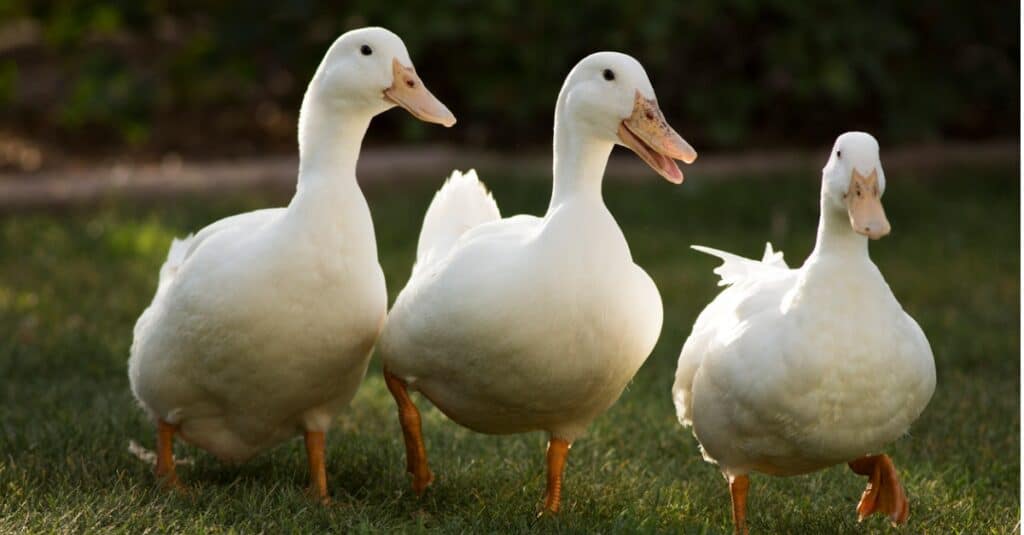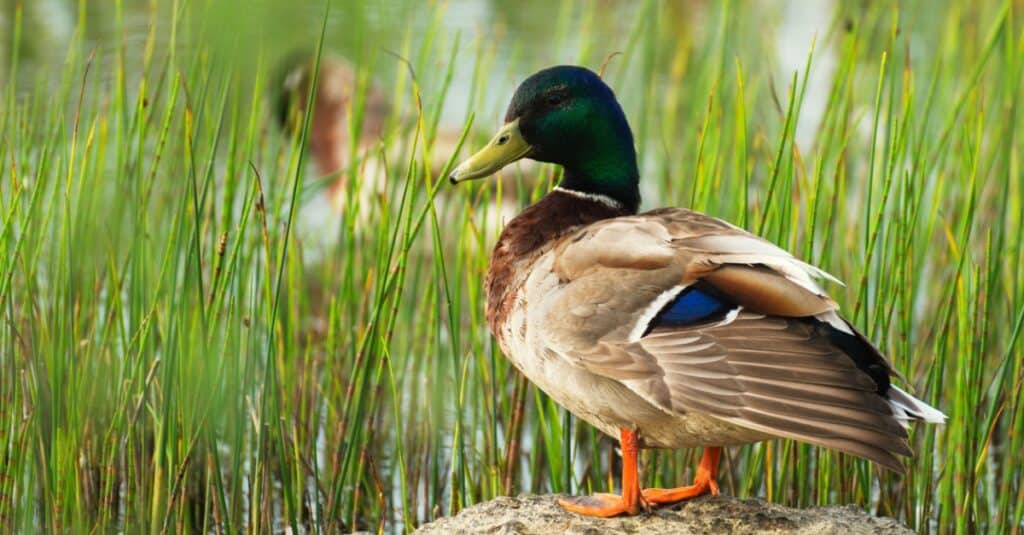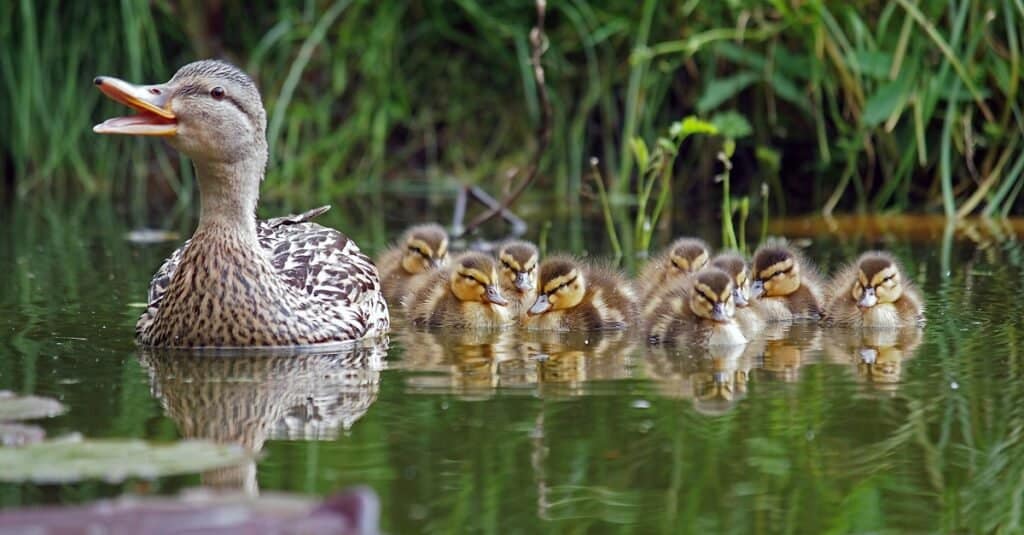Mallards and ducks belong to the biological family Anatidae. This family divides ducks into various subfamilies and tribes, unlike mallards. The vast number of species has caused considerable disagreement among taxonomists, some of who base their decisions on genetic studies and shared behaviors, others on morphological characteristics.
Mallard is a type of dabbling duck found in Northern America and Eurasian ponds, parks, and wetlands. This is why mallards possess most of the ducks’ characteristics. Both species are attracted to bodies of water with aquatic vegetation. However, mallards are migratory birds that occur year-round across much of the United States, while some duck species, mainly those breeding in the tropics, are non-migratory. Only ducks breeding in temperate and Arctic Northern Hemisphere are migratory.
While it’s true that mallards and ducks have many similarities, they differ in several ways as well. This article will look closely at both species to see how they differ.
Comparing Mallard vs Duck

A-Z-Animals.com
The Key Differences Between a Mallard and a Duck
The key differences between mallards and ducks include feeding habits, appearance, breeding, and movement in the water, among others.
Let’s go into more detail to help you discern between the two.
Mallard vs Duck: Classification

iStock.com/Maria Jeffs
Mallard is one type of dabbling duck, while duck is a common name for several species of waterfowl belonging to the biological family Anatidae. Ducks are split into different subfamilies and tribes. Those referred to as ‘true ducks’ belong to the subfamily Anatinae, further divided into numerous tribes. The Anatini tribe is the largest and contains river and dabbling ducks, named after their feeding habits, primarily on the water surface. The tribe Aythyini includes the diving ducks, also named for their primary feeding method.
Mallard vs Duck: Feeding Habits
Mallards feed by tipping their beaks forward and dabbling underwater for plant matter. Ducks have numerous ways of feeding. For example, sea ducks and diving ducks forage deep underwater. They can dive deep since they are heavier than the dabbling ducks and can submerge more easily.
Other ducks feed on the water surface, land, or as deep as they can reach without completely submerging. Some ducks are adapted to pulling molluscs, worms, and waterweed out of the mud in search of insect larvae.
Mallards feed on insects, gastropods, worms, crustaceans, and various seeds and plant matter. Ducks that live near parks and grasslands primarily feed on grasses, grains, and seeds, while ducks that live near wetlands mainly eat small fish, molluscs, and frogs. A few specialized species like the mergansers are well adapted to catch and swallow large fish.
Mallard vs Duck: Color

iStock.com/M-Production
Mallards have specific colorations. Male mallards have a grayish body with a dazzling green head, black rear, brown breast, and bright yellow bill. Female mallards have a light brown plumage with orange-and-brown bills. Both male and female mallards have a white-bordered, blue speculum patch on the wing. On the other hand, ducks come in various colors and patterns, including brown, gray, yellow, black, white, and green.
Mallard vs Duck: Communication
Mallards produce a more damped quacking sound to communicate, though males make a quieter, rasping, one- or two-noted call. When giving a call, female mallards make 2-10 quacks that begin loudly and get softer. She may produce a paired form of quack sounds during courtships. On the contrary, ducks exhibit numerous vocalizations besides quacking, which include yodels, grunts, coos, and whistles that vary from soft to loud calls.
Mallard vs Duck: Movement in Water

iStock.com/Anolis01
Mallards don’t dive in the water, unlike most species of ducks that are well adapted to diving. Before diving, ducks compress their feathers against the body to squeeze out the air, reducing buoyancy. Diving ducks arch their bodies and, with a single thrust of their powerful legs and feet, dive headlong, quickly disappearing beneath the water surface.
Mallard vs Duck: Sexual Dimorphism
Sexual dimorphism exists between male and female mallards. Both sexes look pretty different from each other in terms of size and color. While male mallards have a grayish body, female mallards have light brown plumage with dark brown stripes on the body. Apart from a few types, most ducks of the same species don’t exhibit sexual dimorphism.
Mallard vs Duck: Breeding

Robert Adami/Shutterstock.com
Mallards form pairs during spring, while courtship happens in winter and pairing during autumn. The pairs last until the female lays eggs. During this time, a male mallard will either remain on standby to sire replacement clutches or mate with females that appear unattached or isolated. They also don’t mind breeding a different duck species or female mallards with a brood of ducklings.
Ducks typically have one partner at a time that often lasts for one year like most mallards. However, larger species of ducks and the passive ones tend to have pair bonds that last many years.
Mallard vs Duck: Life Span
The average lifespan of mallards is between 5-10 years in the wild. They may live more than ten years in captivity. Ducks are not long-lived as mallards. The average life span of ducks ranges between 4-8 years. The larger breeds of duck have the shortest life spans compared to the smaller species. They hardly live beyond five to seven years of age.
The post Mallard vs Duck: What are the Differences? appeared first on AZ Animals.
from AZ Animals https://ift.tt/SCwOZ1U